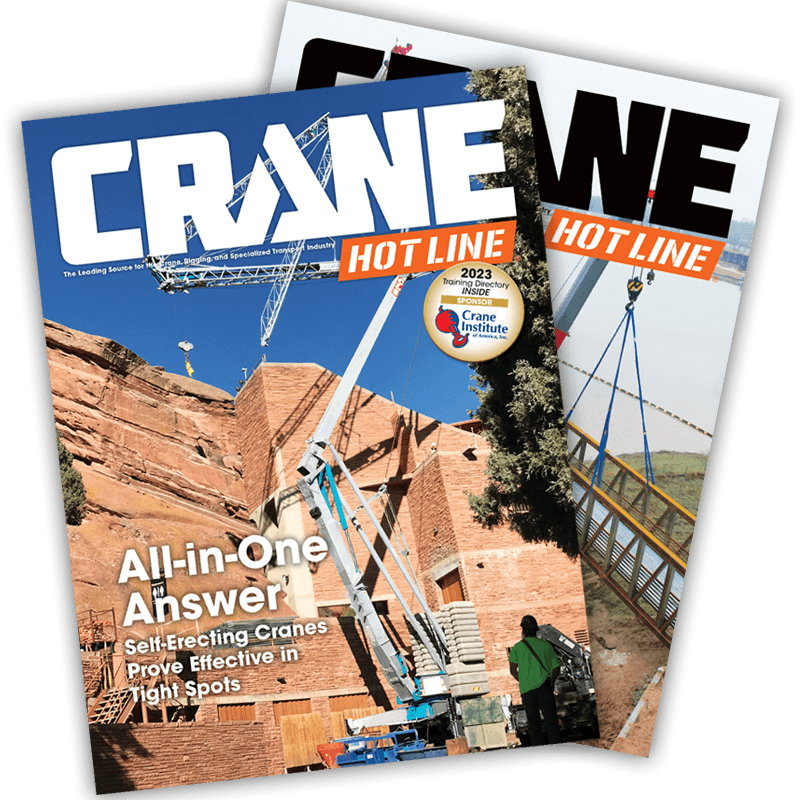Three Cranes Team Up for Massive Covered Bridge Project
 |
| Enlarge Image It took three cranes to place four hefty sections of the nation’s largest covered bridge. |
November 5, 2008 – The
Four 152-foot long sections, weighing in at 325,000 pounds each, make up the driving surface of the covered bridge. In order to save money and labor while bumping up the safety factor, general contractor Union Industrial Contractors (UIC) of
The spans were built on the ground and then lifted into place by the cranes on the project. The middle two spans were lifted into place from the valley below the bridge. The first and fourth spans were rolled out onto special launch frames from atop each bank. UIC hired ALL Erection & Crane Rental of Cleveland, Ohio, to lift the weighty spans into place 80 feet above the river. “Perfect planning and an experienced crane company are key,†said Miller.
All Erection’s Compu-Crane lift simulation software was used to help visualize the engineer-designed lift plan and to facilitate the final layout and setup as well as the sizing of the launch frames. The company also provided a 300-ton
The
The hefty sections, coupled with the weight of the crane rigging, were the tip of the iceberg where challenges were concerned in this critical lift. The crane mats had to be made perfectly level with plenty of fill to make sure the crawler crane wouldn’t walk with the weight of the load. All Erection’s Marty LaCava, sales representative, reported as the first and fourth sections were rolled out onto the launch frames, they gained weight with every inch off the frame without support.
The working area below the bridge was tight, and the massive pylons, already in place, presented further challenges for not only crane operations, but crane setup upon arrival, said LaCava. The rigging plan had to be perfect, as did the timing, the weather, and the myriad other small details that go into a critical lift. And, although the crew worked 10- and 12-hour days on the project, the result was worth every minute, according to Miller. In fact, he reported the job came out ahead of schedule. “A project like this usually comes along just once in a lifetime,†Miller said.
Because planners dedicated two years to this project, they were able to minimize crane rental costs by limiting the time the machines were on the job. The
LaCava said though it’s rare for a crane company to have that much iron available at once, having access to such a vast fleet made it possible. “We appreciated ALL’s assistance in sizing the cranes and their flexibility with their equipment to meet our goals and to keep our budget costs in line,†said Miller. “We could not have found any other crane company with ALL’s equipment and qualified operators to perform the task.â€


